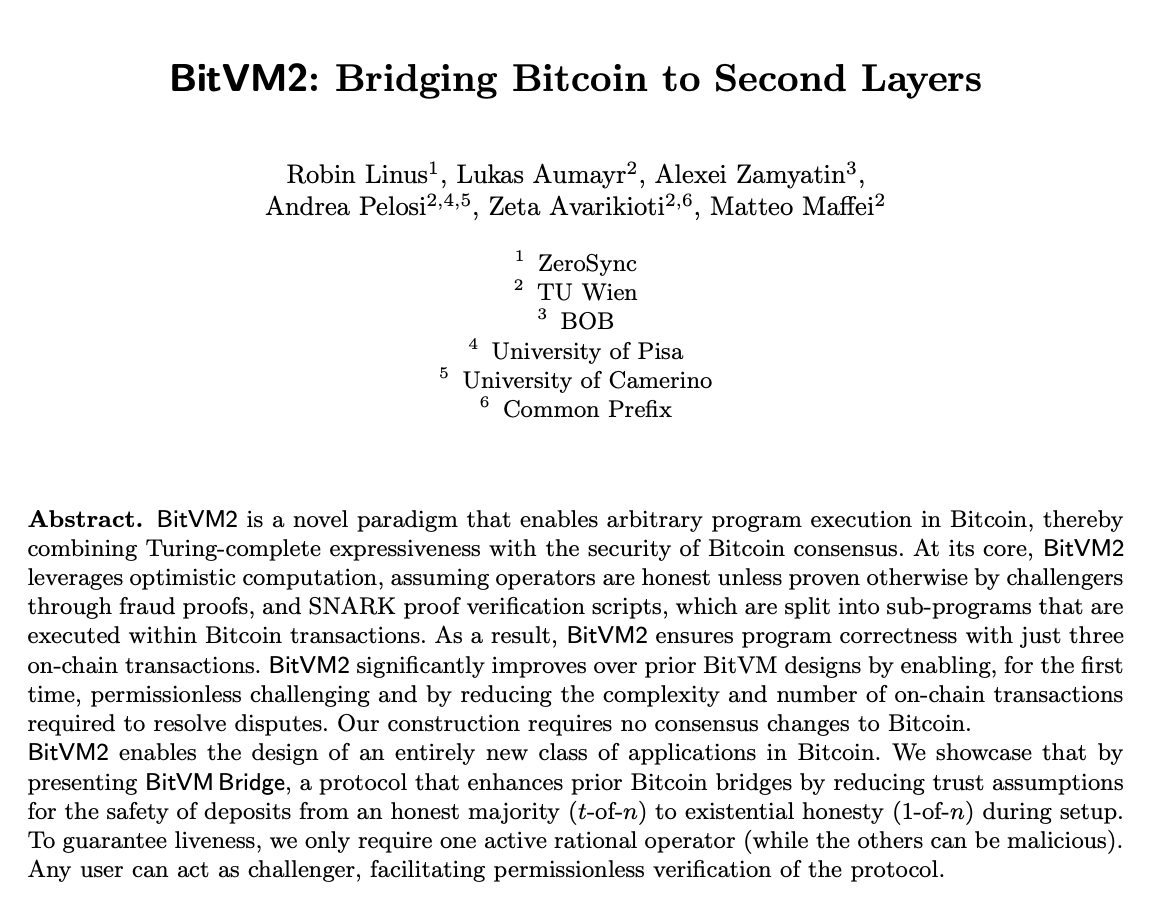Summary
- Bitcoin scaling devs released a new whitepaper on BitVM2.
- The second version of Bitcoin Virtual Machine reveals improved scaling capabilities.
Bitcoin scaling developers have released a new whitepaper for the second version of Bitcoin Virtual Machine, BitVM2, and the updated BitVM bridge.
Alexei Zamyatin, co-author, and the co-founder of Bitcoin sidechain BOB revealed details via X. According to the post on X:
- BitVM2 is a major improvement over the previous BitVM versions.
- BitVM Bridge is now the most secure BTC bridge design.
BitVM2 and BitVM Bridge
BitVM2 features the following characteristics:
- Security: it’s optimistic computation secured by Bitcoin
- Practicality: only 3 transactions are needed to complete a challenge
- Permissionless: anyone can challenge
BitVM Bridge is the most secure Bitcoin bridge so far, and it’s a 1-of-n security model in which anyone can challenge and prevent theft.
Tech Details
BitVM2 enables arbitrary computation secured by Bitcoin via optimistic off-chain execution and on-chain fraud-proofs.
Any bigger program implemented in Bitcoin Script does not fit into a Bitcoin block. According to the notes, such programs are run off-chan, and if there’s a dispute, devs challenge on-chain only the part of the computation that was incorrect.
Improving Transactions’ Efficiency
The whitepaper details updated efforts to enhance the efficiency of transactions in the Bitcoin network via improvement in the transaction handling capabilities and updated cryptographic methods.
According to the document, BitVM2’s main target is to boost Bitcoin’s transaction capacity without modifying its core code or principles, including decentralization.
BitVM2 basically introduces a permissionless system that allows any user to challenge suspicious transactions, which is an improvement compared to the previous version which limited challenge rights only to the designated parties.
The whitepaper also brings improvements to the BitVM Bridge focused mainly on reduced capital requirements and shorter asset lock-up periods.
Such enhancements support the transfer of BTC to and from rollups which are secondary networks that facilitate faster and less costly transactions on the Bitcoin network.
Challenging an Operator
Zamyatin was asked whether when an operator is challenged, the system continues to operate as normal.
He answered by saying that a bad operator is challenged if they did not concurrently perform a peg out, but are trying to withdraw from BitVM. A successful challenge invalidates their Payout transaction.
He said that as long as there is one honest Operator that correctly performs the peg out, the bridge continues to work as expected.
If all operators are dishonest, the funds can be stuck (but not stolen), since anyone can challenge and eventually, bad operators are kicked out.






